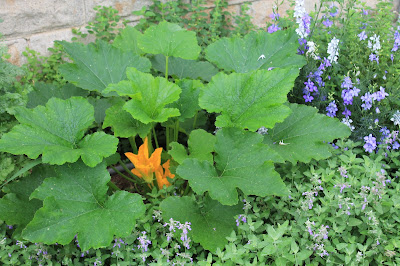 Hovering over my treasure, I beamed as I revealed the latest
garden loot to my husband. “Know
what these are?” I asked.
Hovering over my treasure, I beamed as I revealed the latest
garden loot to my husband. “Know
what these are?” I asked.
“Tomatoes” he replied nonchalantly. Clearly, he wasn’t picking up on my infectious
enthusiasm.
“Yes, but not just ANY tomatoes. These are {pause for emphasis} Our First Tomatoes.”
He gestured towards a pile of rosy red spheres on the
opposite counter. “So what are
those?”
“Those are from Wanda’s garden.”
“And those?” he asked, pointing to a colander of bright
orange cherry tomatoes.
“Those are from Alicia.”
“Mmm hmm.”
What my husband failed to recognize is the monumental
significance of today’s garden haul.
I’ve spent the last two weeks wringing my hands over an entirely unripe
tomato crop. A plentiful harvest
that refuses to ripen is more insulting than one lost to bugs or disease. I should know…I’ve lived through all
three forms of frustration. With
August well underway, I was beginning to suspect that I was falling victim to
another green tomato tragedy.
Gardeners are cut from warm and generous stock; the orange
and red produce scattered throughout my kitchen bore testimony to that
fact. Unfortunately, they set off
a little alert in the gardening cortex of my cerebellum. “Why are everyone else’s tomatoes
ripe?” I had planted at least 5
different varieties, from two different sources, and spread them throughout the
backyard. None of them had shown
so much as a shy blush until this morning. Hence the hand-wringing.
Tomatoes, I am told, will ripen, given a long enough growing
season, which Illinois certainly has.
The complex biochemistry percolating in those plant cells can be a touch
sensitive, though. Tomatoes prefer
air temps below 85 degrees. Any
higher, and the plant shuts down its carotene and lycopene production, two
components essential to the ripening process. Resist the urge to fertilize: failing to ripen is not a
nutritional deficiency. Adding
fertilizer could actually force the plant into a vegetative state, further
slowing your fruit maturity. No,
the only solution is to wait. I
hate waiting.
But none of this emotional rollercoaster registered with
Tall, Dark and Handsome. Aside
from enjoying a slice on his cheeseburger, he’s not a tomato enthusiast. For him, tomato season brings the
pleasant tidings of salsa kisses and dragon breath emanating from his sweetheart
and the onslaught of fruit flies in the kitchen. Considering these enticing prospects, his response may be
justified. There is not, I’m sorry
to say, much I can do about the salsa breath. I write it off as collateral damage. Homemade salsa for supper does
not fresh morning breath make.
Add to that, salsa for breakfast and lunch as well, and sweet exhales
are gone with the wind.
































